- Joined
- Aug 15, 2000
- Messages
- 18,457
GH> Finally, no one seems to be mentioning fancy coloured ASET - its the clasic example that John refers to as "in context", and here is an example of an ASET for a fancy colour - its not the best example - just one that I opened a few minutes ago. Its a DiamCalc from a bad scan.
The top image is from DiamCalc, middle is a vendor photo with no backlight, and below is the AGS digital ASET. It would be great to have an example with a good photo too? <GH
Bryan>Garry,
A question and a couple of comments.
What do you make of the large discrepancy between the DC and AGS ASET maps? Significantly more light return in top image.
Fancy colored diamonds are a different animal altogether than diamonds in the normal range from a cutting perspective. Therefore the ASET interpretations will be entirely different. In a FCD the cutter is aiming primarily for color and weight retention. The color call on the cert and carat weight will largely determine the value of the diamond. Therefore one might come to the conclusion from looking at ASET that this is a very well cut stone in the sense that brightness is damped down that would otherwise diminish the aparent color, and light is being drawn from the pavilion, which may help the color and assist in being able to enhance aparent color in setting by using a strategically closed and colored back.
These same techniques used on a diamond in the normal range would largely negate the beauty aspects important to value and sellability.<Bryan
Bryan perhaps you could help - I rarely have access to AGSL graded diamonds, and do not have AGS-PGS software - but you do on both counts, and I believe you have DiamCalc (if not send me scans). You also have an ASET set up - but I think it might only be ASET black.
So maybe that will not work - but at least we could compare AGS and DiamCalc images.
The aim with lighter colored FCD's is to keep them light (reducing the amount of blue in ASET or contrast from observer obstruction) and increasing the ray paths through the stone (looking down into a very tall glass of one of Johns beverages, vs thru the short side). Shorter ray paths like well cut RBC's are brighter and thats why Vivid rounds and emerald cuts are so crazy expensive. But Fancy Dark FCD's can be made more beautiful by improving the amount of ASET red (and holding off the ASET blue).
The top image is from DiamCalc, middle is a vendor photo with no backlight, and below is the AGS digital ASET. It would be great to have an example with a good photo too? <GH
Bryan>Garry,
A question and a couple of comments.
What do you make of the large discrepancy between the DC and AGS ASET maps? Significantly more light return in top image.
Fancy colored diamonds are a different animal altogether than diamonds in the normal range from a cutting perspective. Therefore the ASET interpretations will be entirely different. In a FCD the cutter is aiming primarily for color and weight retention. The color call on the cert and carat weight will largely determine the value of the diamond. Therefore one might come to the conclusion from looking at ASET that this is a very well cut stone in the sense that brightness is damped down that would otherwise diminish the aparent color, and light is being drawn from the pavilion, which may help the color and assist in being able to enhance aparent color in setting by using a strategically closed and colored back.
These same techniques used on a diamond in the normal range would largely negate the beauty aspects important to value and sellability.<Bryan
Bryan perhaps you could help - I rarely have access to AGSL graded diamonds, and do not have AGS-PGS software - but you do on both counts, and I believe you have DiamCalc (if not send me scans). You also have an ASET set up - but I think it might only be ASET black.
So maybe that will not work - but at least we could compare AGS and DiamCalc images.
The aim with lighter colored FCD's is to keep them light (reducing the amount of blue in ASET or contrast from observer obstruction) and increasing the ray paths through the stone (looking down into a very tall glass of one of Johns beverages, vs thru the short side). Shorter ray paths like well cut RBC's are brighter and thats why Vivid rounds and emerald cuts are so crazy expensive. But Fancy Dark FCD's can be made more beautiful by improving the amount of ASET red (and holding off the ASET blue).

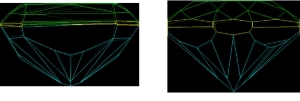
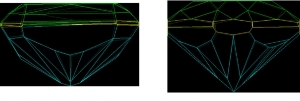

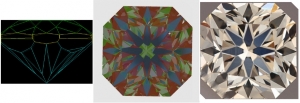

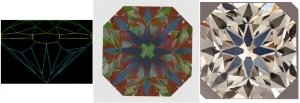

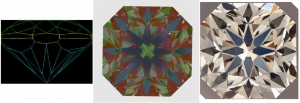
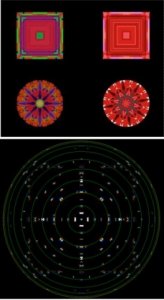
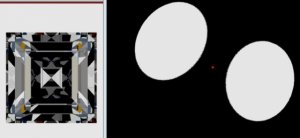
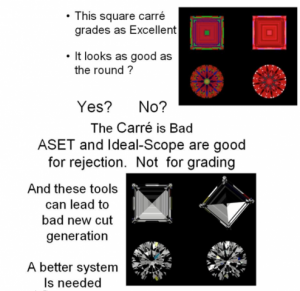
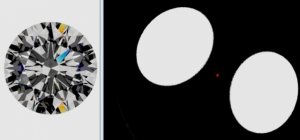
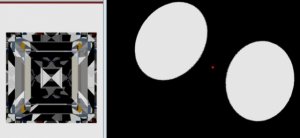
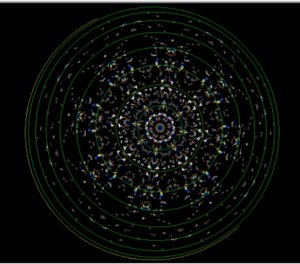
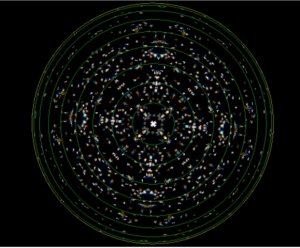
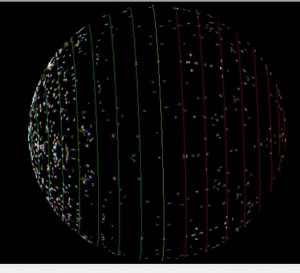


300x240.png)